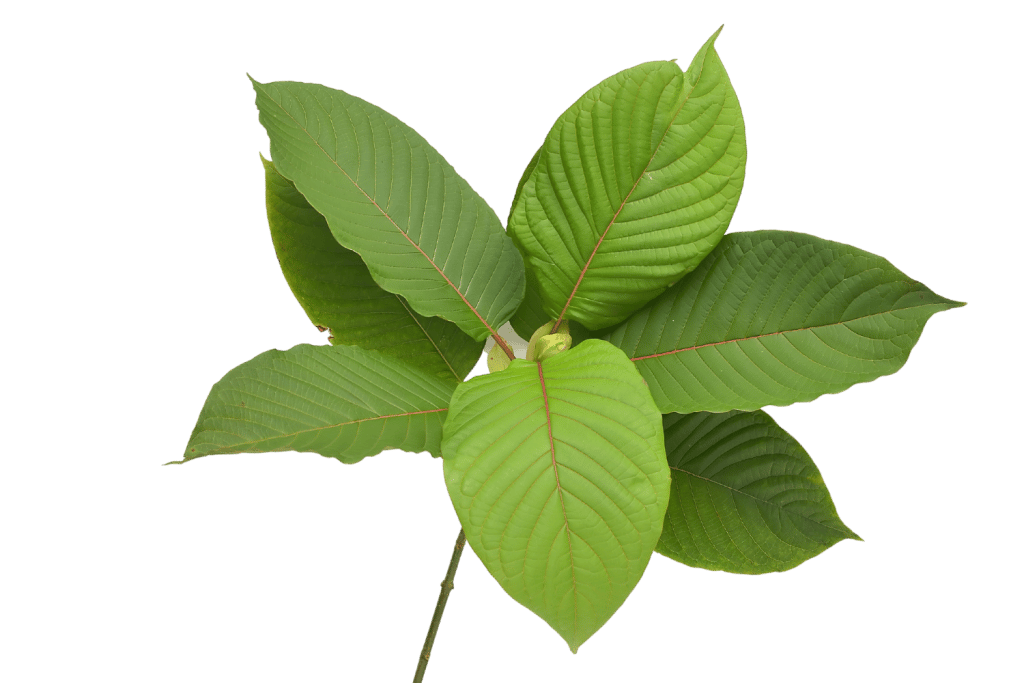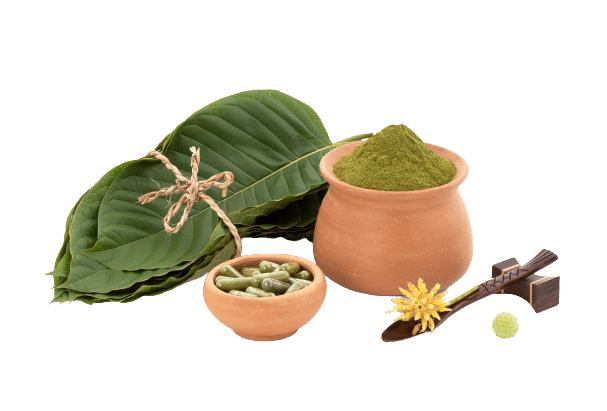Kratom is native to the coffee family and can produce uplifting and stimulating effects in smaller doses. Quite similar to that of a cup of coffee or an energy drink.
In moderate to larger doses, kratom works very differently, helping users achieve intense relaxation, relief from physical pain, and relaxation. Some say kratom’s effects are similar to that of opioids but without such serious health consequences.
Kratom comes from Southeast Asia but is enjoyed by many people across the globe. So what does Norway have to say about kratom? Let’s find out.
Kratom Legality In Norway & Elsewhere
The only way you’ll be able to buy or use kratom when you live in Norway is to seek out and receive a legitimate prescription for it.
This would require you to visit a doctor who isn’t opposed to using herbal medicine and convince the doctor that using kratom is one of the best options to help you.
In Norway, kratom is considered a controlled substance and a herb that can be prescribed as a drug.
The Norwegian Action Plan on Alcohol and Drugs prioritizes finding whatever means possible for drug abuse prevention. It also focuses on early intervention, treatment, and aftercare for individuals who have substance abuse problems.
The goal of the plan has five main points:
- Ensure that individuals who are at risk of developing substance abuse problems are identified and offered assistance
- Ensure that there is a free choice of treatment institutions
- More user-driven solutions and stronger user involvement
- Ensure that individuals participating have access to diversified, integrated services
- Ensure that individuals lead an active and meaningful life
Norway has set up an action plan to help individuals with substance abuse problems. Norway has also banned the trade of kratom. Since Norway is not a European Union member either, there are no customs which means import of kratom is prohibited. You’ll likely face penalties or imprisonment if you’re caught.
Norway is a part of Scandinavia, which includes Denmark and Sweden. The laws in regards to kratom vary for each country.
Denmark added kratom to its Executive Order on Narcotics back in 2008. It would be a criminal offense to import, export, sell, purchase, distribute, possess, produce, or process kratom. Medical prescriptions may be exempt from the order, similar to how Norway approaches the issue.
In Sweden, kratom is illegal or a controlled substance. While kratom is not in their Ordinance on the prohibition of certain dangerous goods, the main component found within kratom (mitragynine) is mentioned in the Regulation on the control of drugs and in the Swedish Medicines Agency’s constitutional collection. The plant is also in Sweden’s Classification of New Psychoactive Substances.
Unfortunately, there’s too much mystery and concern surrounding this botanical specimen, which is likely the result of poor levels of awareness or lack of the urge to research it further.
The WHO, Kratom, & Future Legislation
Will a recent review by the World Health Organization (WHO) be enough of a push in the right direction?
It’s hard to say for sure, but many countries look to the WHO’s recommendations — especially Europe and the U.S. The WHO recently reviewed the safety of kratom; it determined it’s safe and doesn’t need to be added to the list of Controlled Substances.
If there’s a hidden agenda behind banning kratom, we’ll see it come to light.

Can I Buy Kratom In Norway?
There are no legal sources to buy kratom in Norway unless you’ve got a prescription to use the plant.
As we mentioned before, kratom is only permitted in Norway when an individual obtains a legitimate prescription for use. Importing, exporting, trading, purchasing, selling, possessing, and using kratom is illegal unless you have a prescription.
Denmark and Sweden, also countries in Scandinavia, take a very similar approach to the legality and use of kratom. The idea is to be cautious of the plant and its potential risks while still leaving the door open for possible medical use by persons who require it.
Compared to other countries, this is good news to some degree. Many others decided to ban kratom altogether — even for medicinal use — and closed the door entirely.
Luckily, Norway hasn’t become too opposed to allowing individuals to use kratom when they need it; it’s just going to be a matter of finding a Norwegian doctor who will listen to what you have to say.
If you feel kratom could benefit you and live in Norway, the best thing to do is write some notes that include your issues and why. You can also include some information on kratom studies related to your condition. Present as much accurate, legitimate, fact-dense information to your doctor. You may get that prescription if you build a good enough case.
Chronic pain affects approximately 30% of the Norwegian population and is the most common factor of long-term sick leave and disability benefits.
It may be valuable for Norway to explore the pros and cons of kratom further. Since they are at the top of the list for Scandinavian opioid-prescribers, they may be able to prevent an opioid crisis if they explore safer, natural, and effective alternatives.
With about a third of their population struggling with chronic pain, there is a need for substances that can help control and manage that pain. Although, prescribing opioids to everyone and anyone who comes in complaining of physical pain causes opioid epidemics in the first place.
Why Is Kratom Banned In Norway (& Other Countries)?
Kratom isn’t necessarily banned in Norway, but it is controlled.
Addiction and abuse are significant factors that require the government to be cautious with how they go about any substance.
Kratom produces some degree of psychoactive effects and can alter the individual’s frame of mind the way a drug would. That in itself is enough to turn most government officials off to the idea of legalizing it.
However, there’s much more to kratom than just using it recreationally or using it to feel a certain way.
For hundreds and hundreds of years, kratom has been an effective way for the indigenous people of Southeast Asia to manage health issues. Many farmers native to these countries would even chew the leaves to boost their energy levels and help them be more productive in the fields.
Unfortunately, many lawmakers decide to only look at one thing: kratom carries the potential for abuse. However, other factors, such as how the pharmaceutical industry would be affected, are most likely contributing factors to controlling kratom. Loss of revenue may be enough to make kratom illegal, but we don’t know for sure.

Kratom Use: A Quick History
Centuries ago, manual laborers and farmers in Southeast Asia would use kratom to combat pain and fatigue while they worked, allowing them to do more and be more productive. Opioids aren’t going to help you get anything done.
Indigenous people also incorporate the plant into many ceremonies. Kratom is a very close part of these people’s everyday lives. The natives who grew up around these trees have never viewed kratom cautiously or negatively.
Kratom became popular in the U.S. back in the early 1990s. It was appealing because it has less-serious side effects and fewer health risks than opioids or prescription painkillers. Opioids are incredibly addictive, and opioid abuse has skyrocketed over the past few years.
In 2019, there were 49,860 fatal overdoses connected to opioids in the United States, indicating that opioids may not be the safest or smartest way to control physical pain. Becoming addicted to opioids is very easy to do, and Norway exceeded Denmark and Sweden in the prevalence of all prescribed opioids [1].
Opioids are dangerous because of how quickly individuals build tolerance for them. This results in taking increasingly larger doses of opioids, which can have serious consequences. Respiratory complications and failure are prevalent among individuals who abuse opioids.
Kratom can offer users a similarly sedating experience, but only when taken in larger doses. Certain kratom strains are ideal for relaxation and sedation, while others are better for energy and focus. However, this beneficial plant simply does not carry the same risks and dangers that opioids do.
It can manage your pain effectively without making you too intoxicated to get your day-to-day responsibilities done.
Another plus is that kratom can help individuals get through their period of withdrawals after quitting opioids. One study observed a person self-treating withdrawal by consuming kratom [2]. Their findings concluded that the active component in kratom, mitragynine, may exert specific effects that could attenuate opioid withdrawal symptoms and cravings.
Kratom Deaths: Can Kratom be Fatal?
Governments are banning kratom, saying it’s dangerous, but is this true? Let’s take a look at the facts.
There have been quite a few cases where individuals overdosed while having kratom in their system. This has painted a clouded picture of what kratom is capable of since these overdoses were fatal.
Keep in mind that these are pure associations; kratom was not the actual reason for death. It’s usually due to the combination of several other drugs in the system, resulting in a fatality.
Similar to how someone could have THC found in their system when they overdose, but they were also taking fentanyl, prescription painkillers, and methamphetamine in addition to the THC. THC is just a factor of the overdose, not the reason for overdose.
No, using kratom responsibly will not produce lethal effects. However, there are some critical points to keep in mind.
- Using kratom with other substances can pose severe risks to your health and even death.
- Taking exceedingly large amounts of kratom every day may result in liver problems that could cause more severe issues later down the line.
- Pre-existing medical conditions and taking certain medications can also impact how safe kratom is for you to ingest. Drug interactions could arise and potentially cause adverse reactions, which could be fatal.
Known Side Effects Of Kratom
Rarely are there adverse reactions or side effects among moderate users. The individuals who are likely to experience the most side effects are either new to using it or those who abuse the plant.
It’s also more common to see side effects in individuals who use kratom and other substances — this is highly inadvisable.
The best way to avoid unpleasant side effects is by using kratom responsibly.
This means you’re taking the recommended dose, not using it with other substances, and taking occasional breaks.
The most common known side effects of kratom are as follows:
- Gastrointestinal upset (vomiting/nausea)
- Sedation and extreme lethargy
- Dizziness
- Anxiety, paranoia, and jitters
A side effect more common for natives who use the tree’s leaves is hyperpigmentation in the cheeks, as chewing the kratom leaves can darken tissue.
The Truth About Kratom Addiction
There is the possibility of becoming addicted to the plant [3]. However, even though kratom acts like an opioid, it does not cause the strong and dangerous addiction that opioids do. Overdose is extremely rare.
Some people struggle with their bad habits more than others and can’t control their urges. Creating a dependency and addiction with kratom is possible; it depends on the individual.
You can become addicted to anything, even caffeine. You have to acknowledge that the risk of addiction is there, as it is with many other things readily available in our everyday lives. A good example of this would be food. Ice cream, cookies, and donuts won’t kill you if you enjoy them responsibly; however, they may result in serious health complications that could kill you if you’re not careful and you’re unable to control yourself.
Know the signs of kratom addiction and what to do if you think you’re headed down that road.
Suggested Reading: Can You Overdose on Kratom?

What Is the Correct Dosage for Kratom?
Dosage for kratom will vary on multiple factors.
The strain will affect how you feel. White vein kratom produces more stimulating effects, red vein kratom has more sedating effects, and green vein strains offer a nice balance.
The more you take, the more sedentary you’ll end up feeling. This can be great for individuals who need help fighting restlessness or insomnia but isn’t the best for someone who has a long to-do list.
If you’re busy, you’ll want to space out relatively small doses of kratom throughout your day. Taking too much, too close together, may induce a calm that can be hard to shake.
Bodyweight is another factor since smaller individuals will likely need less, whereas larger individuals may need to take a bit more to achieve their desired results.
You’ll also want to pay attention to whether or not you’ve eaten beforehand because consuming kratom on an empty stomach can amplify the effects.
Newcomers should always start with a small dose; you could even try microdosing for the first time. You can expect a slight buzz, almost like you drank a cup of espresso. You may feel more focused, creative, and motivated as time moves on.
Wait 24 hours before deciding what size your next dose will be, as you’ll want to understand how the first dose affects you before increasing it.
That said, here’s what’s considered the average dose amounts.
Dosing Guide
- Microdose: >2 g
- Small dose: 2-5 g
- Medium dose: 5-8 g
- Large dose: 8-12 g
Dosing can be confusing, so check out a kratom dosing calculator if you need further help.
Remember that taking kratom is kind of like cutting hair; once it’s done, you can’t change your mind.
Try to stick with a small dose at first. It can be exciting feeling the exhilaration and uplifting effects of kratom, but taking more can completely transform your whole experience. Taking more doesn’t necessarily amplify the effects that you’re currently feeling.
Also see: How Long Does it Take for Kratom to Kick In?
How To Take Kratom Safely
There are many ways to take kratom, all of which are safe.
The first would be brewing kratom into tea; this is a widespread practice. However, the tea is extremely bitter and may not be suitable for some people with sensitive stomachs.
Another way to safely take kratom is via capsules; these provide you with an exact dose of kratom, no fiddling with a teaspoon and loose powder.
Caps may cut back on waste and be more convenient, but they also typically cost more.
A newer approach to ingesting kratom would be through enhanced powders and kratom tinctures. These will also cost a bit more, but since they are concentrated and much more potent, you won’t need nearly as much product to achieve your desired results. Remember that tinctures and enhanced powders have a different set of dosing guidelines.
Kratom Safety Guidelines
Taking kratom safely means taking the recommended dosage and not mixing it with other substances, including alcohol. There may even be some mild risks associated with combining nicotine and kratom.
Taking too much or combining it with other substances is where things get complicated; this is also where the more severe risks surface.
If you’re taking any medications, speak to your doctor about possible interactions before using the plant. Kratom interacts with many substances. It can cause agonistic and antagonistic interactions and causes certain substances to be metabolized slower than they should be.
Our drug interaction chart can help you understand how risky combining certain medications and drugs can be, but it doesn’t replace a doctor’s advice.
Safety also has to do with finding a trustworthy and reliable source. Some companies do not care what is in their products; some even add chemicals to make it seem more potent. Reputable vendors will have third-party tests done to verify the purity of their kratom. These tests are easier to find online.
Suggested Reading: 10 Best Kratom Vendors (Verified Reviews, 2022)

Key Takeaways: Is Kratom Legal In Norway?
Kratom is not legal in Norway; it’s a controlled substance that requires a prescription.
Fortunately, Norway hasn’t banned kratom altogether. What the future holds for kratom in Norway relies heavily on further research and studies. That’s the only way government officials can get a clear idea of the true benefits and risks of kratom use.
Maybe they’ll decide on legalizing it in the future if enough people can bring light to the issue, especially since they will likely be faced with an opioid crisis if they continue over-prescribing them to their residents. For now, you’ll be able to enjoy kratom in Norway with your trusty prescription.
- Muller, A. E., Clausen, T., Sjøgren, P., Odsbu, I., & Skurtveit, S. (2019). Prescribed opioid analgesic use developments in three Nordic countries, 2006–2017. Scandinavian journal of pain, 19(2), 345-353.
- Boyer, E. W., Babu, K. M., Adkins, J. E., McCurdy, C. R., & Halpern, J. H. (2008). Self‐treatment of opioid withdrawal using kratom (Mitragynia speciosa korth). Addiction, 103(6), 1048-1050.
- Galbis-Reig, D. (2016). A case report of kratom addiction and withdrawal. Wmj, 115(1), 49-52.

